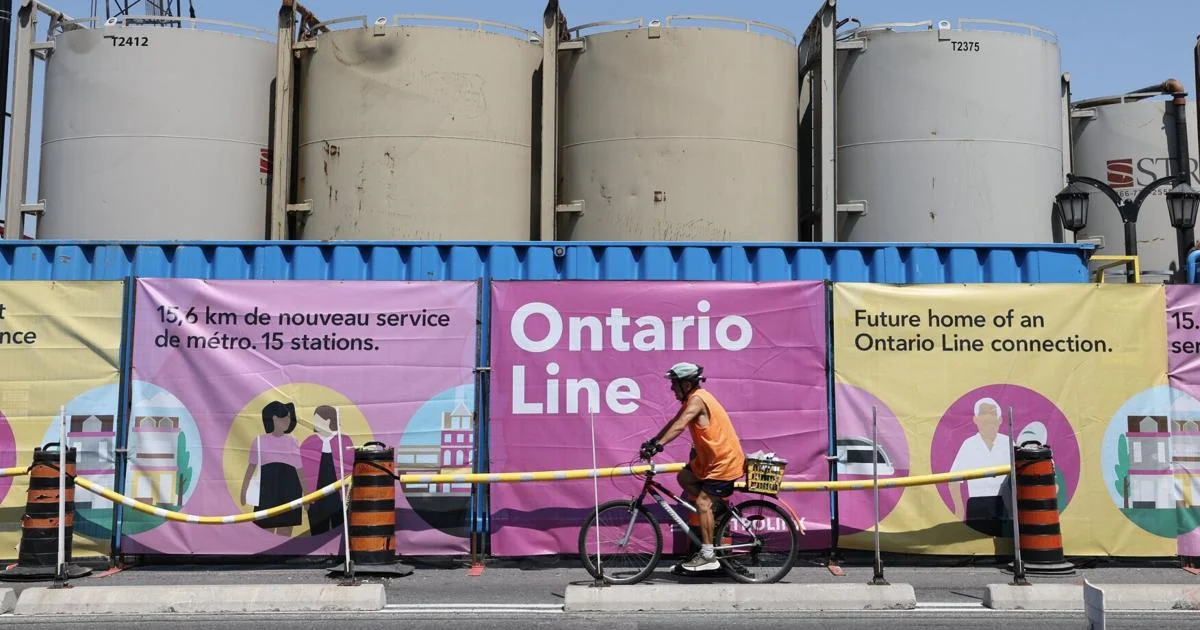By Amy Dempsey Raven Ben Cohen
After decades of lobbying from panicked residents who have had rodents take over their gardens and tunnel into their homes, Toronto finally has a plan to deal with its growing rat problem.
The proposed strategy would see Toronto hire a new director to lead the war on rats, a tactic borrowed from New York City, which in a 2022 job advertisement for a Rat Czar famously sought a “bloodthirsty” candidate with a “swashbuckling attitude, crafty humor and general aura of badassery.”
Also in the plan, which will be debated at the city’s economic and community development committee next Wednesday, are proposed guardrails meant to prevent construction projects from unleashing rats into homes.
If passed, both private and public construction projects will have to create rat management plans before shovels hit the ground.
“As you’re constructing, you’re disturbing breeding grounds for rats,” said Coun. Alejandra Bravo (Ward 9, Davenport) at a press conference Wednesday. This forces rats out into the city.
“In the past, rats used to stop breeding in the winter. Now, they can breed all year round,” producing potentially thousands of descendants in a year, she added.
Bravo said this has created a “perfect rat storm” in Toronto that has been “raining rats in our neighbourhoods.” She recently got a call from a constituent who said her young daughter awoke one night to a rodent scurrying across her face.
“Can you imagine what that does to a family?” said Bravo. “We’re hearing these kinds of stories all the time.”
The rat proposal is proactive, Bravo said, aimed at eliminating the “source of rats” by taking away sources of food, water and shelter. Executing it will elevate Toronto to the level of more forward-thinking North American cities who have long had rat countermeasures on their books, such as New York, Chicago, Washington D.C. and Ottawa, according to Bravo.
Bobby Corrigan, a renowned rodentologist who runs New York City’s Rodent Academy, a pest management program managed by the public health department, said after reviewing Toronto’s proposed plan that it’s a good start for the city.
“If this (plan) is carefully and earnestly implemented and monitored, I would predict it will move Toronto’s rat management program forward significantly,” he said.
Corrigan cautioned that the plan “oddly overstates” the use of rodent birth control as a leading practice in pest management, and should re-evaluate that proposed strategy.
“To present it as a leading practice risks misleading the populace, potentially diverting attention from more proven methods — especially those of detailed comprehensive refuse management,” said Corrigan.
“A nuanced discussion of its limitations alongside a focus on advancing waste management practices would strengthen the recommendations significantly.”
If the plan is given the green light at committee next week, it will go to city council for final approval later this month. Implementation should then start next year with the hiring of Toronto’s rat czar — an associate director — and a project manager, who together will bring the rat strategy to life, working alongside other city divisions. Their salaries, estimated at a combined $351,000, will need to be carved out of the 2026 budget.
It took Toronto 20 years and three attempts to get to this point. In 2006, a report by Toronto Public Health recommended the city take no action on rats, as there was “no conclusive data” to justify an increased response, while glossing over the fact that the city wasn’t collecting data at all.
In 2018, city staff spent 18 months working on a strategy. Then COVID-19 hit, and it was never finished.
Internal records from the research phase for that rat report suggest that some city staff members believed the reports of rat infestations were overblown, with one Toronto Public Health manager saying private pest control companies “overestimate the rat problem in the city of Toronto.”
In the years since, property standards-related rodent complaints have surged 70 per cent. Climate change and construction, including on the Ontario Line, have been a boon for expansionist rats. A study published in the journal Science Advances in January found Toronto’s rat population was the third-fastest growing of 16 major cities, putting the city ahead of New York, Chicago and Amsterdam.
While Toronto hasn’t wavered on its stance that rats are “not a public health issue” in the city, as they have yet to transmit disease to humans, staff acknowledged in the rat proposal report that the animals can “still pose health risks in food establishments and may contribute to mental health impacts for residents dealing with infestations.”
Janice La Chapelle, a 67-year-old retiree, has been plagued with rats at her home in Leslieville since 2020, soon after construction for the Ontario Line began across the street. Rodents ate through her garden hose, chewed through her front porch and tunnelled through concrete into her basement. She spent about $1,700 on pest control and repairs, and then struggled to get Metrolinx to reimburse her the full amount.
“The lack of transparency from Metrolinx has been incredibly frustrating,” she said. Had the city had a plan in place back then, it would have “saved my mental health and a lot of money,” she added.
La Chapelle said she hopes the city’s new rat management strategy will bring accountability from the construction industry. “I think it’s terrific — if they do it. It sounds good, but you never know with politics.”
